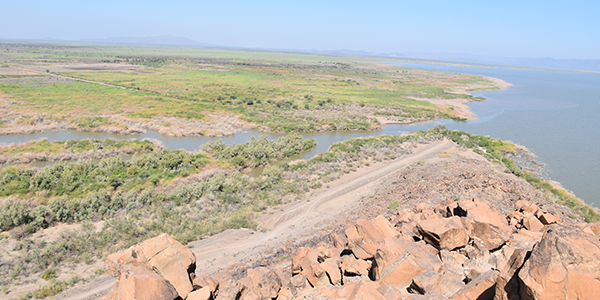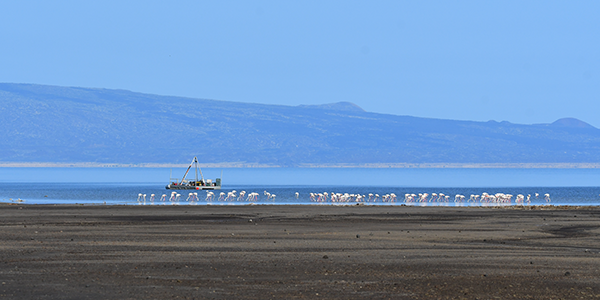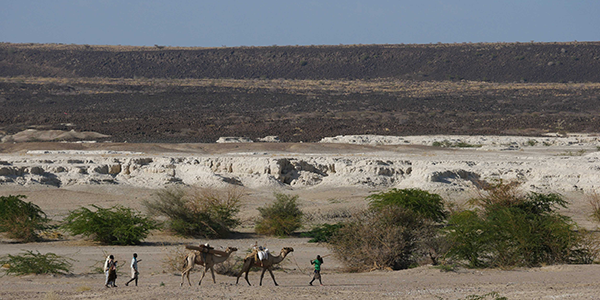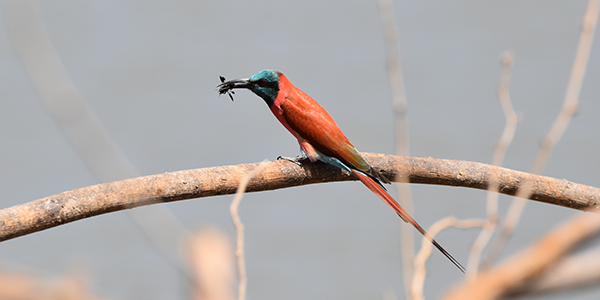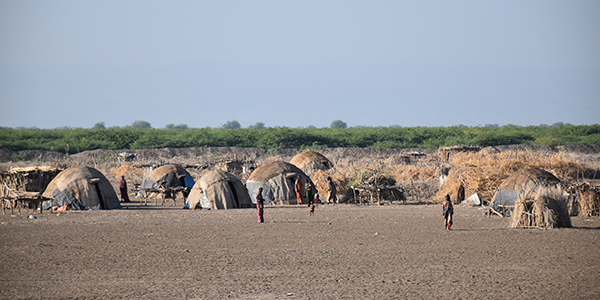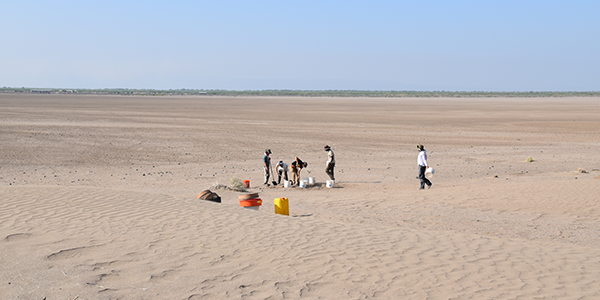The NILe and AFAR regions: hydrologic changes and impact on human adaptation in the last 20,000 years (NILAFAR)
Les modèles numériques qui synthétisent nos connaissances du système climatique prévoient pour les décennies à venir des variations extrêmes du cycle de l'eau qui auront un impact sur les ressources naturelles et les populations. Dans la corne de l’Afrique, depuis plusieurs milliers d’années, des périodes de fortes et faibles moussons ont déterminé la disponibilité en eau dans les basses terres, ce qui a affecté drastiquement les dynamiques de peuplement humain. Comment ces populations se sont-elles adaptées à ces changements plus ou moins rapides de disponibilité en eau depuis 20,000 ans ? Comment l’homme s’adaptera aux changements climatiques et environnementaux futurs ?
Model simulations of future climate change predict a reduction of precipitation in subtropical desert zones at the end of the 21st century over the coming decades, which will have an impact on natural resources and populations. In the Horn of Africa, for several thousand years, periods of strong and weak monsoons have determined the availability of water in the lowlands, which has drastically affected the dynamics of human settlement. How have these populations adapted to these more or less rapid changes in water availability over the last 20,000 years? How will humans adapt to future climatic and environmental changes?
Le projet NILAFAR vise à quantifier les fluctuations hydrologiques et à documenter leurs conséquences sur les communautés humaines, à la transition entre le monde des chasseurs-cueilleurs et le monde des agro-pasteurs, au cours des 20,000 dernières années, en Afrique du nord-est (en région Afar, Ethiopie & Djibouti). Il vise aussi à acquérir une meilleure compréhension des mécanismes à l’origine des fluctuations de la mousson africaine et des épisodes d’hyperaridités qui se sont installés en quelques centaines d’années dans le passé.
The NILAFAR project aims to quantify hydrological fluctuations and document their consequences for human communities during the transition from hunter-gatherers to agro-pastoralists over the last 20,000 years in north-east Africa (in the Afar region, Ethiopia and Djibouti). It also aims to better understand of the mechanisms behind fluctuations in the African monsoon and episodes of hyper-aridity that took place over a few hundred years in the past.
This project is based on disciplinary and human synergy in the Afar region between :
- fieldwork in archaeology, palaeoclimate and geomorphology
- climate modelling: regional scale (flow of the Blue Nile, Awash & Gobbad) and global remote sensing
- laboratory analyses in order to i) define human subsistence strategies such as fishing, livestock farming and trade ii) quantify hydrological fluctuations and their impact on soil erosion by coupling organic biomarkers (delta2Hwax), lithium & neodymium isotopes and the study of diatoms (hydro-chemical transfer functions).
Ce projet est conçu sur une synergie disciplinaire et humaine en région Afar entre :
- des missions de terrain en archéologie, paléoclimat (carottage des lacs Abhé Djibouti/Ethiopie) et géomorphologie
- de la modélisation du climat : échelle régionale (débit du Nil Bleu, Awash & Gobbad) et télé-connection globale
- des analyses en laboratoire afin de i) définir les stratégies de subsistance humaine telles que la pêche, l'élevage et le commerce ii) quantifier les fluctuations hydrologiques et leurs impacts sur l’érosion des sols à partir du couplage de biomarqueurs organiques (d2Hwax), des isotopes du lithium & néodyme et l’étude des diatomées (fonctions de transfert hydro-chimique).
Les attendus scientifiques sont :
- Etablir un modèle de peuplement diachronique à grande échelle dans la région Afar
- Mieux comprendre la co-évolution Homme-Environnement-Climat depuis 20,000 ans
- A long terme, mieux comprendre la variabilité passée de la mousson en Afrique de l'Est afin de proposer des tendances hydrologiques futures et in fine aider à améliorer l’adaptation des populations face au défi de la raréfaction des ressources en eau.
The main scientific objectives are :
- Establish a large-scale diachronic settlement model in the Afar region
- A better understanding of human-environment-climate co-evolution over the last 20,000 years.
- In the long term, a better understanding of past monsoon variability in East Africa in order to propose future hydrological trends and, and thus raise people’s awareness of future changes in ecosystems so that populations can better adapt.
Période de financement : avril 2021- avril 2026 (contact revel@geoazur.unice.fr)
Montant : Aide ANR: 558 688,00 €
https://anr.fr/Project-ANR-20-CE03-0011



